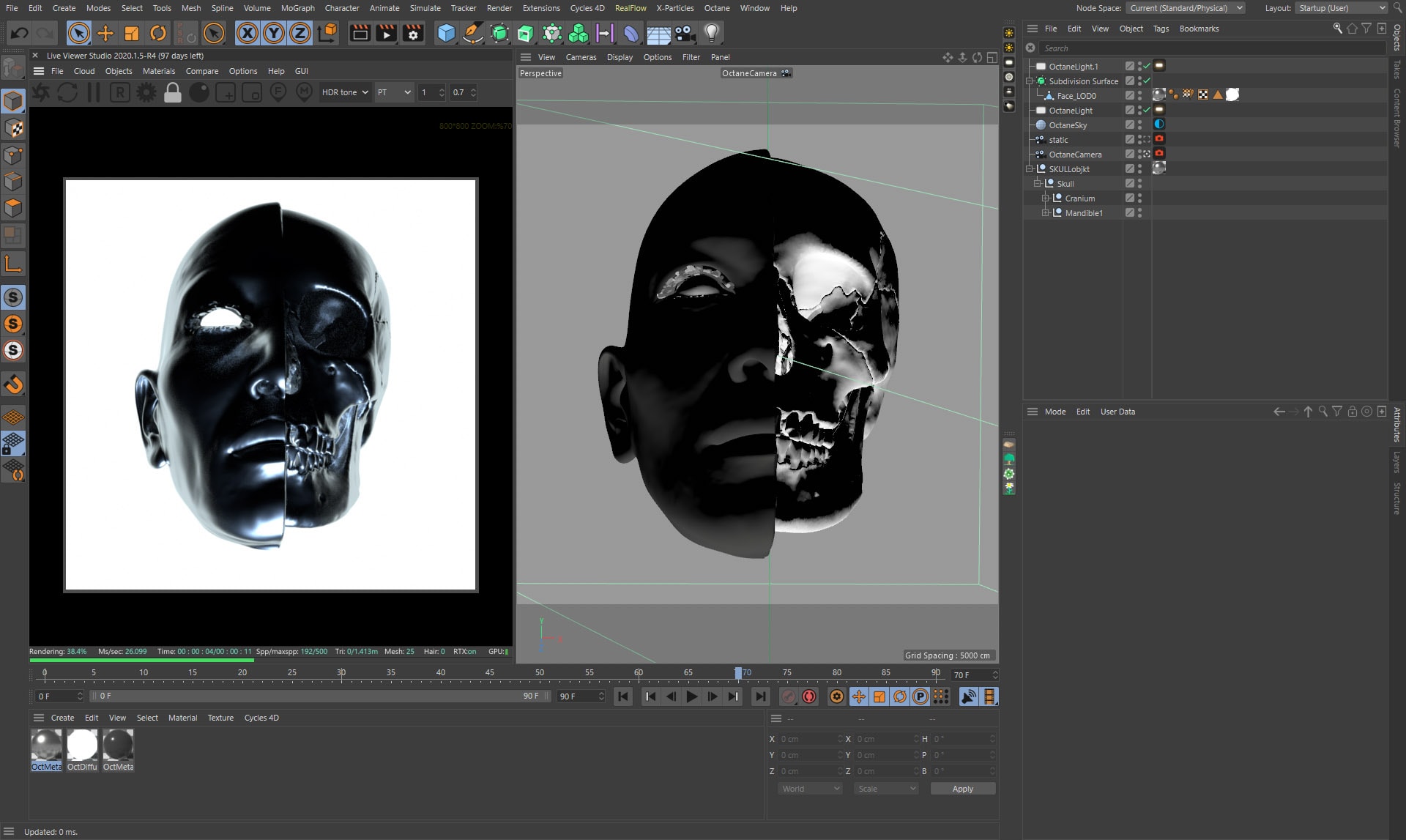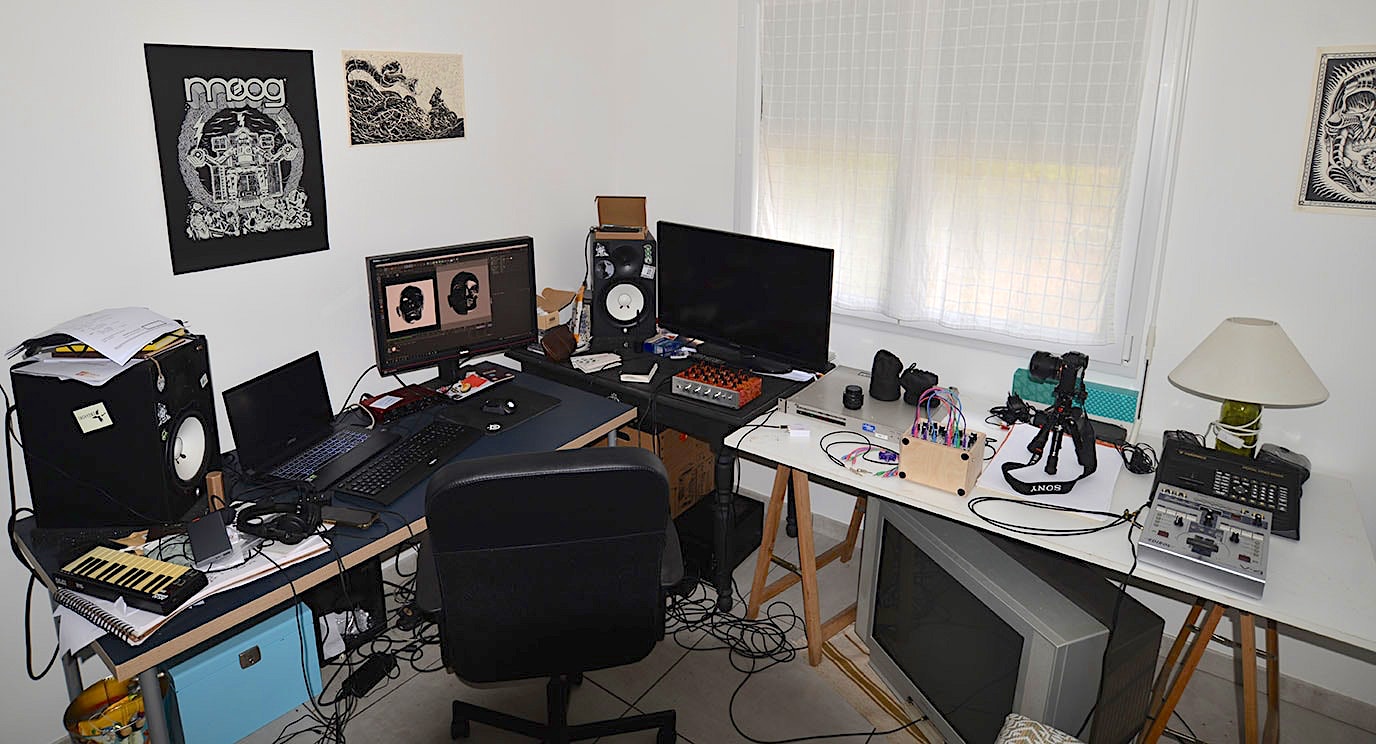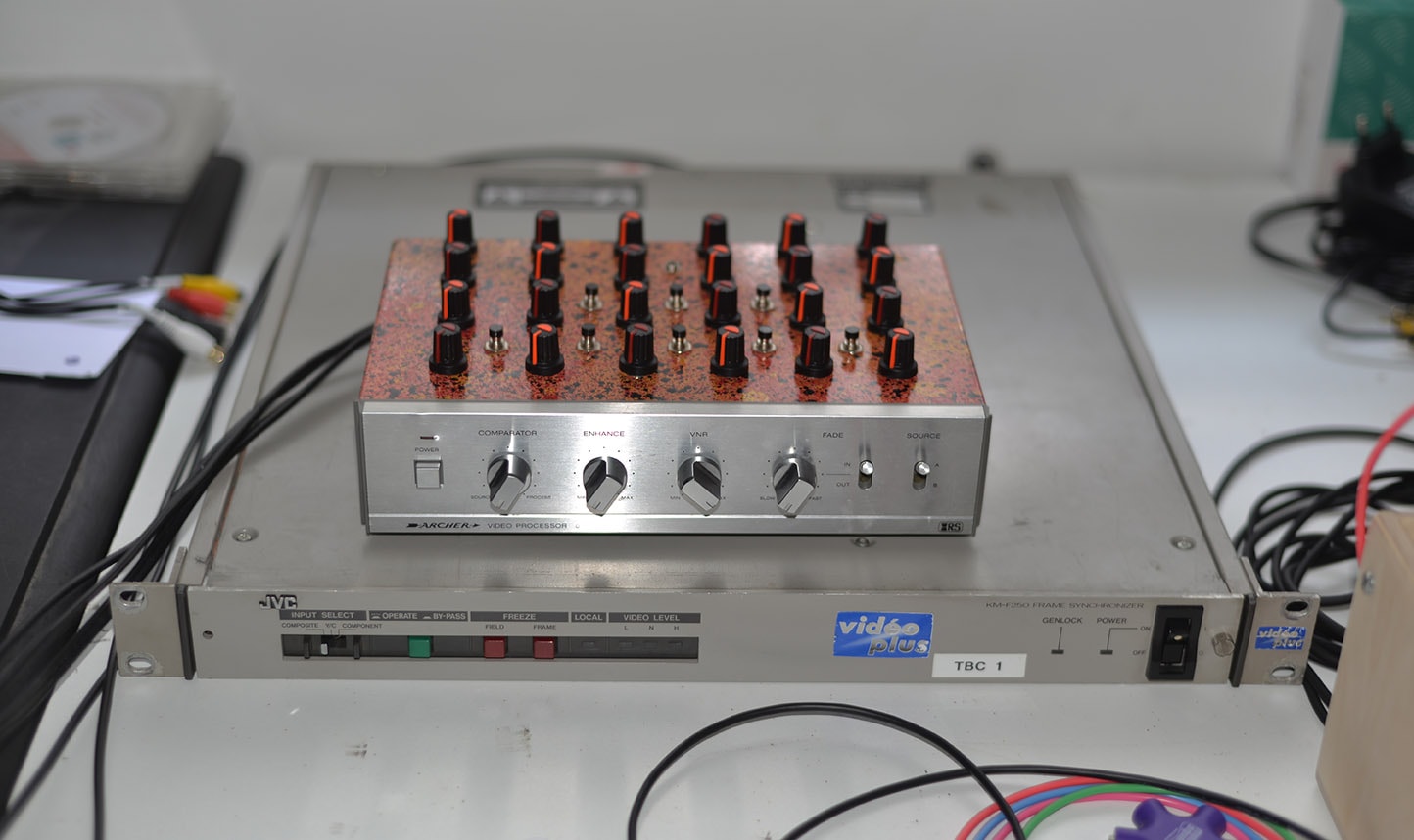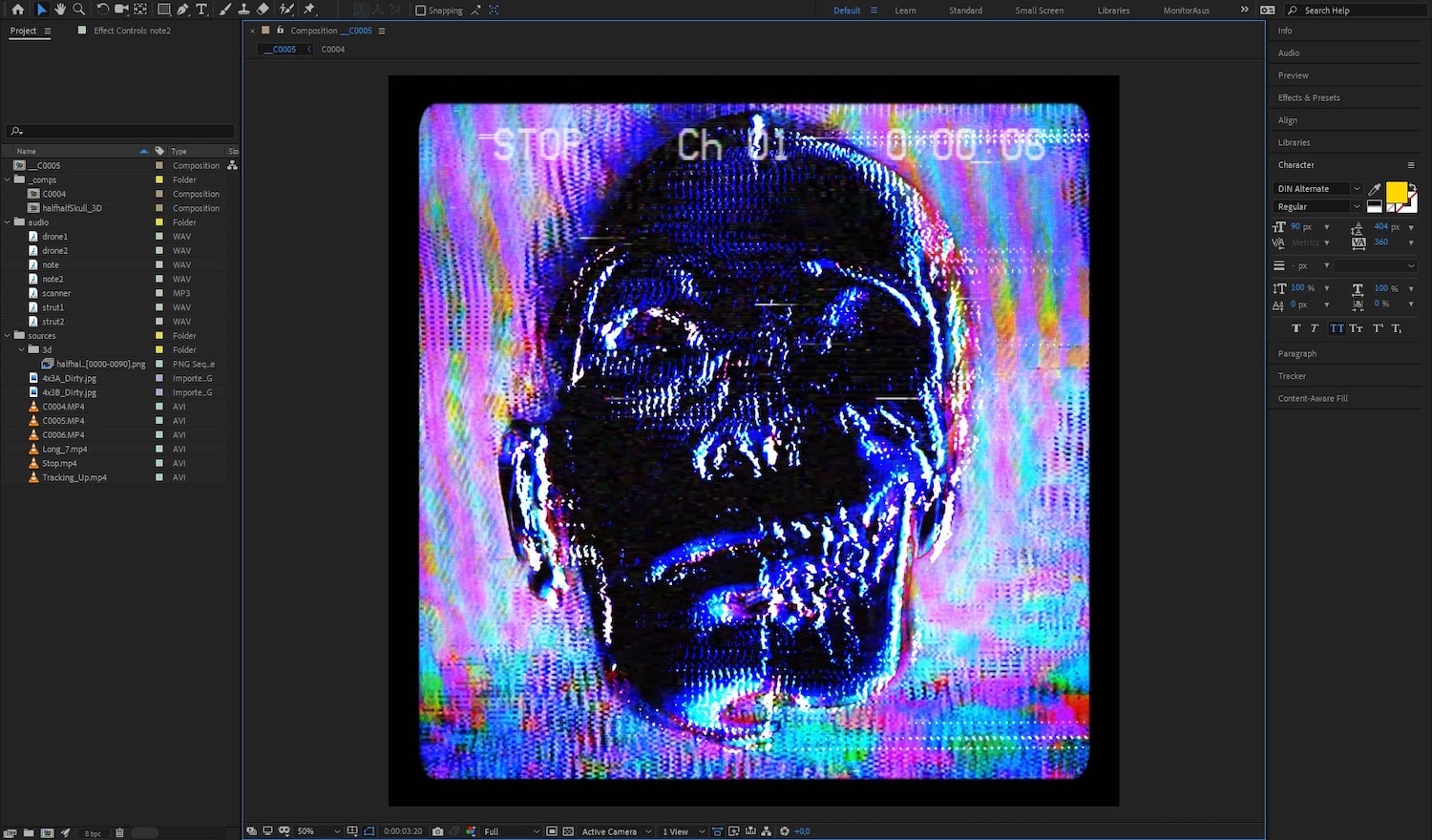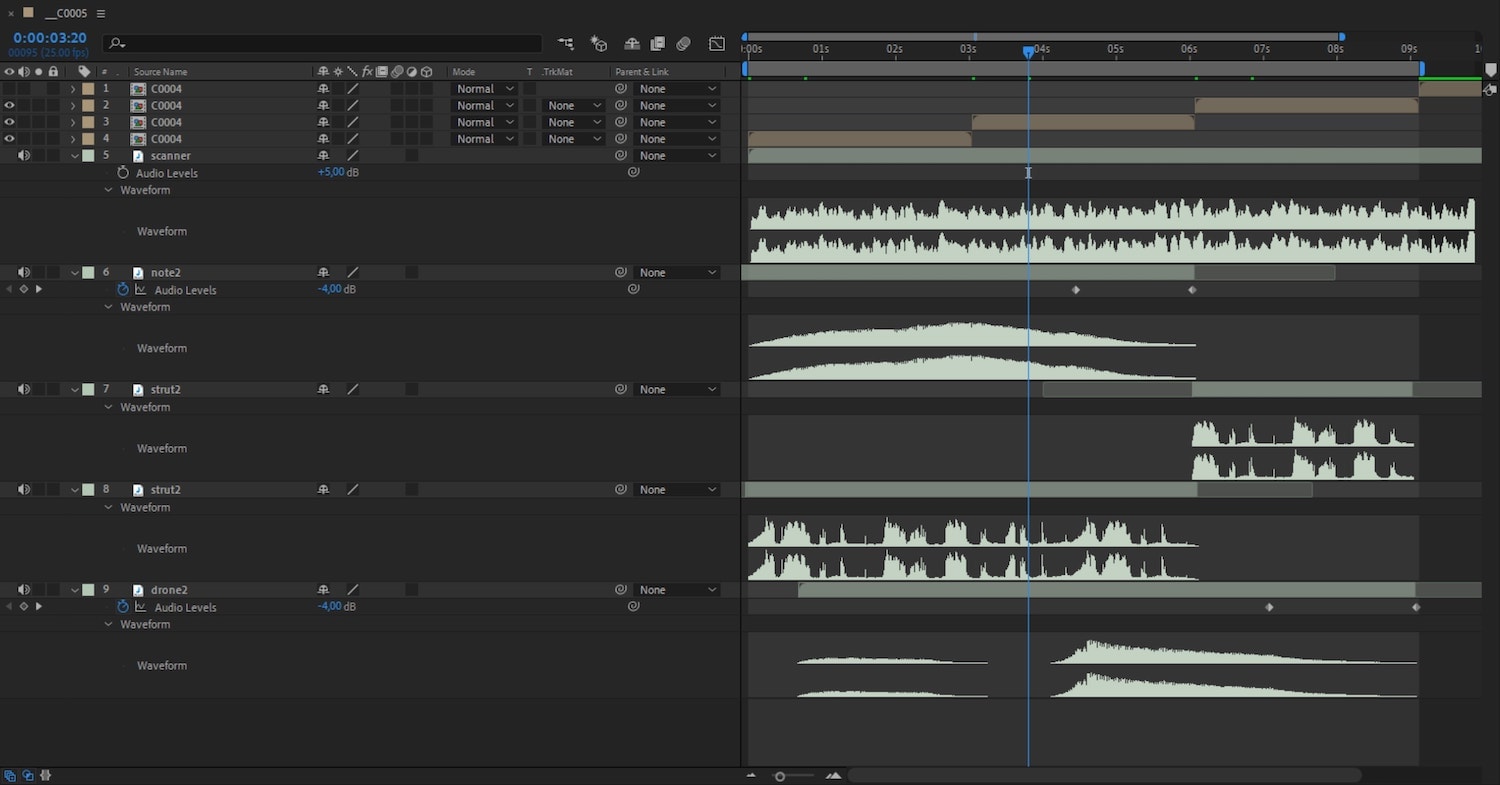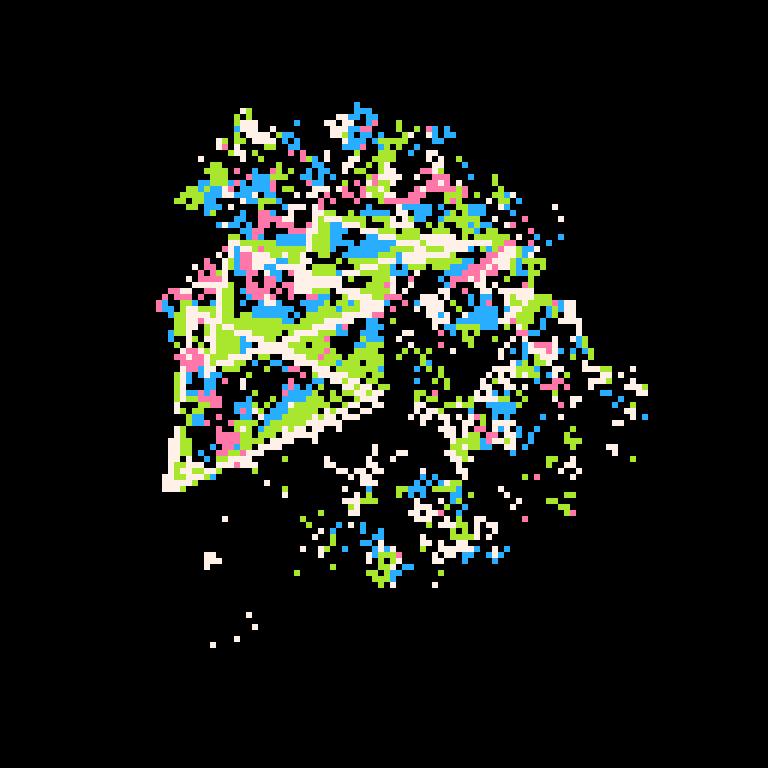This piece contains audio, please unmute the video below. It is also quality reduced, so I’d encourage you to view the original on hic et nunc.
In Process is a series that examines the inspiration, methods, and tools used by artists to create their work. Each episode focuses on a specific piece.
Find all episodes of In Process on the Ep. 0: Index page.
In this episode, we explore Half made by Stella Particula (pictured above).
Stella is one of my favourite artists in the lofi/glitch NFT space. Her style is quite distinct; there is a consistent blue/purple colour theme to much of the work and each piece centres on a glitched-out 3D model, which sets the work apart from many of the other glitch artists in the space.
Her process seamlessly blends the analog and the digital to create works that feel simultaneously modern and retro.
What was the inspiration for Half made?
This piece is part of my glitch project Stella Particula in which I explore the link between analog and digital tools. It’s a project that ponders the bridge between various eras and technologies and how humans interfere with them.
With technological advances comes a blend of cultures, inspirations and styles: that is what I’m trying to explore.
With decentralisation, the NFT world is all about that (blending cultures and styles), and for that reason, I think it’s a good place to showcase my work.
Through my work, I also pay homage to the evolution of tech and the art is a reflection of how life is changing, at a fast pace, leaving traces behind.
For this particular piece, “Half made”, I chose to represent a split; half skull/half head. Besides the “memento mori” straightforward signification, I hoped to display a kind of balance and at the same time a sense of incompletion.
Life means to grow and to die with some things achieved and others left behind or just started. The split is a way of showing this concept; how dead/old things (tech for example) can blend with living things/things from the present. The glitch provides the link.
Describe the technical process of the piece. What medium and tools were most important to creating it?
When making my art, I usually start with a 3D composition. It allows me to sketch ideas and collect some materials (renders) for me to glitch. It’s also a nice way to bridge between digital and analog.
For this piece, I started by making a human model with the help of MetaHumans by Epic Games (Unreal Engine).
Once this was created I imported the model into my go-to 3D software Cinema4D, where I had a skull model at the ready.
Next, I cleaned up some polygons and resized the models to fit the two together.
I then added some camera movement. I thought that slight movement was better than a full rotation for this one; we are actually oscillating between the two faces so they always have to be in front of the camera.
I added some lighting to have a render to glitch. The lighting consists of an HDRI and some lights making the material of the models coloured and illuminated where I wanted to.
When the 3D render is done, the next step is to glitch it. This is the time for experimentation.
I sometimes have ideas before glitching, like if I’m going to do some video feedback. The 3D render is an important part of this process as the render can sometimes dictate if I’m going to do this or that.
When doing glitches, I put myself in a dark room and film my CRT TV with a DSLR. Sometimes I also capture my glitches with a small USB capture card but I prefer filming my screen.
Hardware-wise, I have a Psychenizer made by Tachyons+ and two different mixers: a V4 by Edirol and an MX-1 by videonics. I’ve also recently gotten a standalone TBC (time base corrector) which is super useful to stabilize the video signal and eliminate dropouts.
When the analog part is done, I switch back to digital and work in After Effects for some take selection and post-production. I usually record long takes of video (sometimes up to an hour), so finding just the right section can take time.
This is a moment of experimentation again, finding the right sections and blending them to create textures and colours then syncing them to make a perfect loop.
For this piece, I also added a frame and some “stop” timecodes.
Finally, I export the video as an uncompressed .mov and convert it to mp4. If I’m working on a GIF, I’ll export it to Photoshop to convert it.
For this piece, I also created some sounds. I usually work in Ableton Live, but in this case, I just mixed together some stock sounds in After Effects and added them to the video.
Music was an important part of the feel I wanted to give to this piece, so I tried to make something dark and suspenseful. I blended sounds together to represent the split, with a piano note marking the separation of the models.
How did the NFT for the piece come about? Did you make this piece specifically for hic et nunc, or was this a piece you'd already made and retrofitted for the platform?
This piece was made specifically for hic et nunc (HEN).
hic et nunc was the first NFT marketplace I was on and it’s my go-to marketplace for doing pieces with multiple editions.
I love the community and the fact that anyone can mint and buy things because transaction fees are so low (compared to Ethereum, which is less accessible because of high transaction fees).
See Half made and other works by Stella Particula on hic et nunc →
Where is the best place to learn more about your work?
I spend my time on Twitter as @ParticulaStella and publish anything related to my work there.
Follow Stella Particula on Twitter →
I have an Instagram where I post my pieces without anything else (@stellaparticula).
Follow Stella Particula on Instagram →
I might also be working on a website soon….
Thanks, Polyforms for the opportunity to share a bit of my universe. Cheers!
(Polyforms: Thanks Stella for sharing your process with us! 🙏 🎉)


